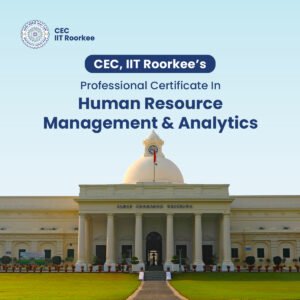Table of Contents
Last updated on June 10th, 2024 at 10:11 am
Ever feel like your job has all the thrill of watching paint dry? You’re not alone. Millions out there slogging through repetitive tasks, feeling more like a cog in a machine than a vital contributor. Happy and productive workers are key to a successful business.
If you’re in HR, management, or something similar, there’s a tool called the “job characteristics model” to help employees be more productive and satisfied with their jobs. Learning how to use this workplace engagement can make you better at it, which means happier and more productive employees! But fear not, for there’s a secret weapon waiting to be wielded: The Job Characteristics Model (JCM)!
What’s the JCM, and why should you care?
Think of it as a recipe for a super-charged, motivation-boosting workplace. Developed by the brilliant Hackman and Oldham, the JCM identifies five key ingredients that turn a monotonous job description into a recipe for employee engagement.
Job characteristics theory isn’t just another dry concept in work design; it’s a dynamic framework for making jobs more engaging and fulfilling. Imagine a blueprint for transforming any job into a source of motivation and satisfaction. This theory outlines five essential job features—skill variety, task identity, task significance, autonomy, and feedback. These features shape key work outcomes like motivation, satisfaction, and performance and even reduce absenteeism and turnover.
How do they work their magic?
By enhancing three crucial psychological states: the sense of meaningfulness, a feeling of responsibility, and a clear understanding of one’s results. Essentially, job characteristics theory turns the art of job design into a science of workplace happiness and productivity.
The Job Characteristics Model (JCM) can help! Developed in 1976, this model identifies five key aspects of a job that make it interesting and fulfilling for workers. These include using a variety of skills, completing whole tasks, feeling their work matters, having control over their work, and getting feedback on their performance.
- Skill Variety: Imagine using the same dull butter knife for every meal. Your employees crave tasks that utilize a range of skills. Consider incorporating projects that require problem-solving, creativity, and a dash of technical know-how. This keeps things interesting and allows them to showcase their full potential.
- Task Identity: Have you ever finished a project and felt like you just colored in half a coloring page? Employees crave a sense of ownership. The JCM emphasizes the importance of “whole tasks,” where individuals see a project from start to finish. This fosters a sense of accomplishment and allows them to take pride in their work.
- Task Significance: We all want to feel like our work matters. The JCM highlights the importance of tasks that have a clear impact on the bigger picture. Help your employees understand how their role contributes to the company’s goals and the impact their work has on clients or customers.
5 Keys to a Fulfilling Job
- Seeing the whole picture: This means you get to finish a complete task, not just a tiny piece of it. It’s like building a whole toy car instead of just putting on one wheel. This makes you feel like your work matters more.
- Feeling like your work counts: This means your tasks are important to others, like helping customers or making the company run better. It’s like knowing your car helps people get where they need to go.
- Using all your skills: This means you get to use different abilities on the job, not just the same one over and over. It’s like using all your tools to build things, not just a hammer. This keeps work interesting and helps you learn more.
- Having some freedom: This means you get to decide how to do your work to some extent, not have everything dictated to you. It’s like being able to choose how to paint your car, not having someone tell you every stroke. This makes you feel more responsible and in control.
- Getting feedback on your work: This means your boss or colleagues tell you how you’re doing, not leaving you guessing. It’s like getting tips on how to drive your car better. This helps you improve and feel more confident.

How can the Job Characteristics Model enhance workplace motivation?
Organize team meetings where employees from different departments can share their roles and how they all work together. This fosters a sense of connection and purpose.
- Autonomy: Micromanagement? The JCM emphasizes the importance of giving employees control over how they complete their tasks. This allows them to use their judgment, make decisions, and feel a sense of ownership.
- Feedback: Imagine working out in a gym with no mirrors. Frustrating, right? The JCM highlights the importance of regular, constructive feedback. This helps employees understand their strengths, identify areas for improvement, and stay motivated.
Schedule regular one-on-one meetings to provide specific feedback. Encourage employee well-being to ask questions and create a safe space for open communication.
Why is the Job Characteristics Model crucial for organizational success?
The JCM is a framework that requires some tinkering to find the perfect fit for your workplace.
- Know Your Employees: Not everyone craves the same level of challenge or autonomy. Consider individual preferences when applying the JCM.
- Start Small: Rome wasn’t built in a day, and neither is a super-motivated workforce. Implement changes gradually and measure the impact.
- Open Communication: Talk to your employees! Get their feedback on current work practices and brainstorm ways to incorporate the JCM principles.
By applying the Job Characteristics Model, you can transform your workplace from a snoozefest into a motivational factor. So, unleash your inner JCM chef and start creating a recipe for success!
The Final Words
Transforming your workplace into a vibrant, motivating environment doesn’t happen overnight, but with the Job Characteristics Model as your guide, you have a powerful tool at your disposal. Start small, stay adaptable, and maintain open communication with your team.
Remember, the key to a thriving workplace is understanding and addressing the unique needs and strengths of each employee. With the JCM, you can create a dynamic and engaging work environment that not only boosts productivity but also fosters happiness and fulfillment. So, take the first step today and watch as your team transforms into a powerhouse of motivation and success!
Imarticus Learning HR Management Program: A Comprehensive Guide
Embark on a transformative journey with the Imarticus Learning HR Management Program, designed to equip you with the essential knowledge to navigate the landscape of human resources in today’s business world.
Through this program, you will delve into a wide array of critical topics, including job analysis and design, strategies for hiring, selecting, and retaining employees, performance management and appraisal, training and development, compensation and benefits, skill and competency enhancement, diversity management, organizational culture, and employee engagement.
Experience immersive learning like never before with hands-on training that puts theory into practice. Access to trending tools, engaging case studies, and real-world projects ensures that you gain practical insights and develop the skills necessary to excel in your chosen field.
HR analytics course offers a unique fusion of academic expertise from IIT Roorkee and industry insights from top companies, providing you with a comprehensive education that combines theoretical foundations with real-world applications. As part of the program, you’ll receive six months of premium access to LinkedIn Learning, granting you unlimited opportunities to expand your skill set through a vast library of online courses that complement your program coursework.
Ready to Take the Next Step?
Contact us today to learn more about how the Imarticus Learning HR courses can empower you to achieve your professional goals and thrive in the dynamic field of human resources.

